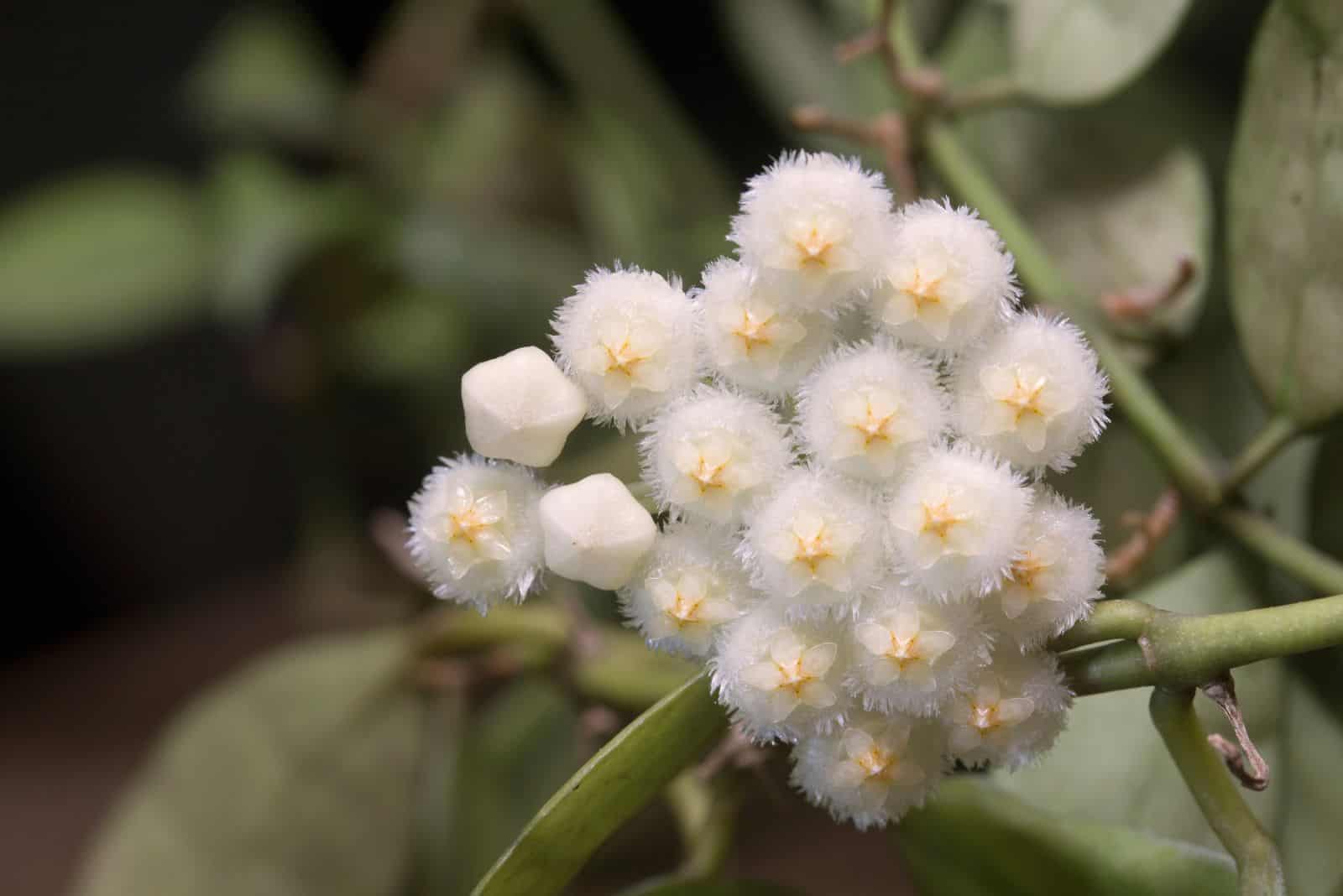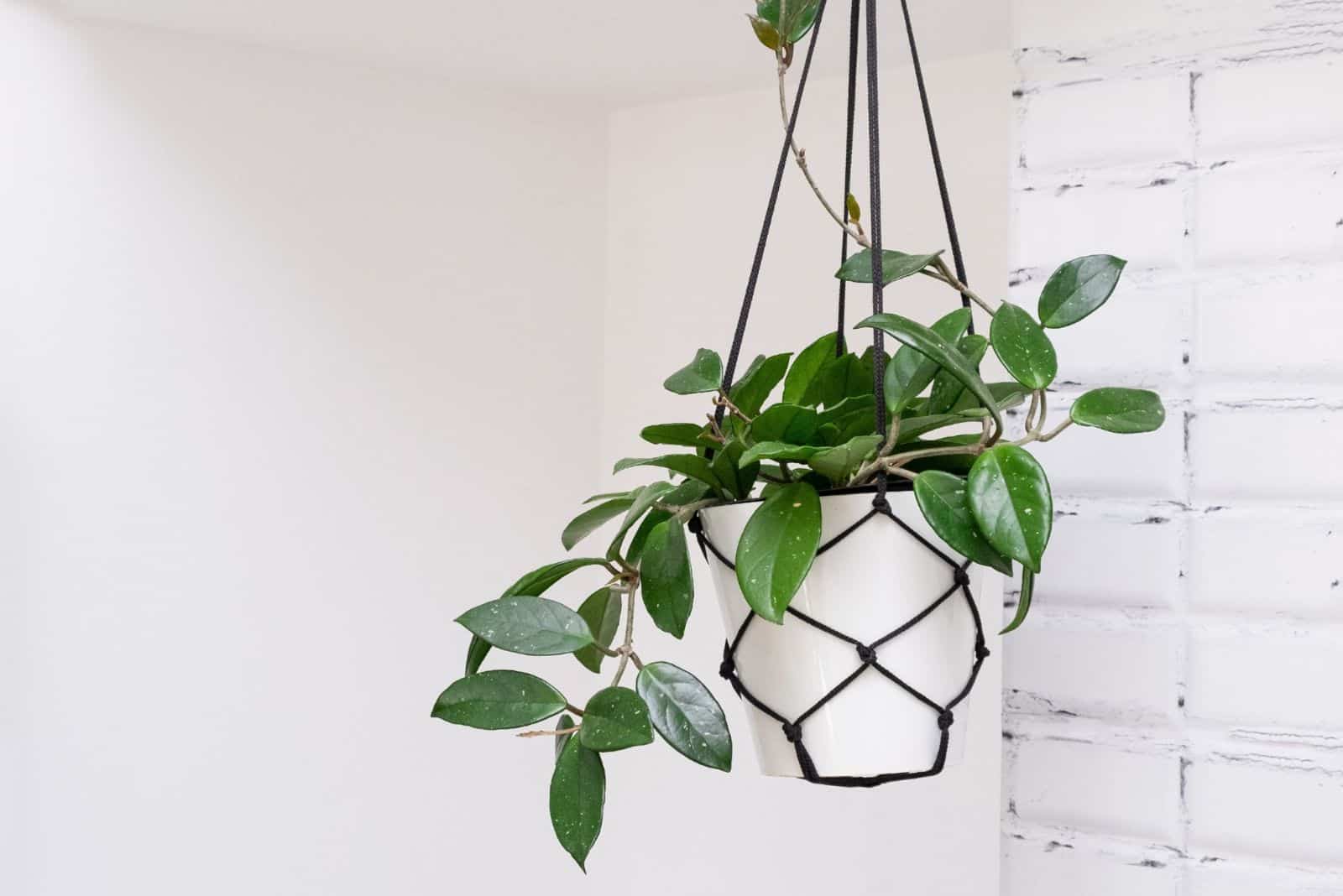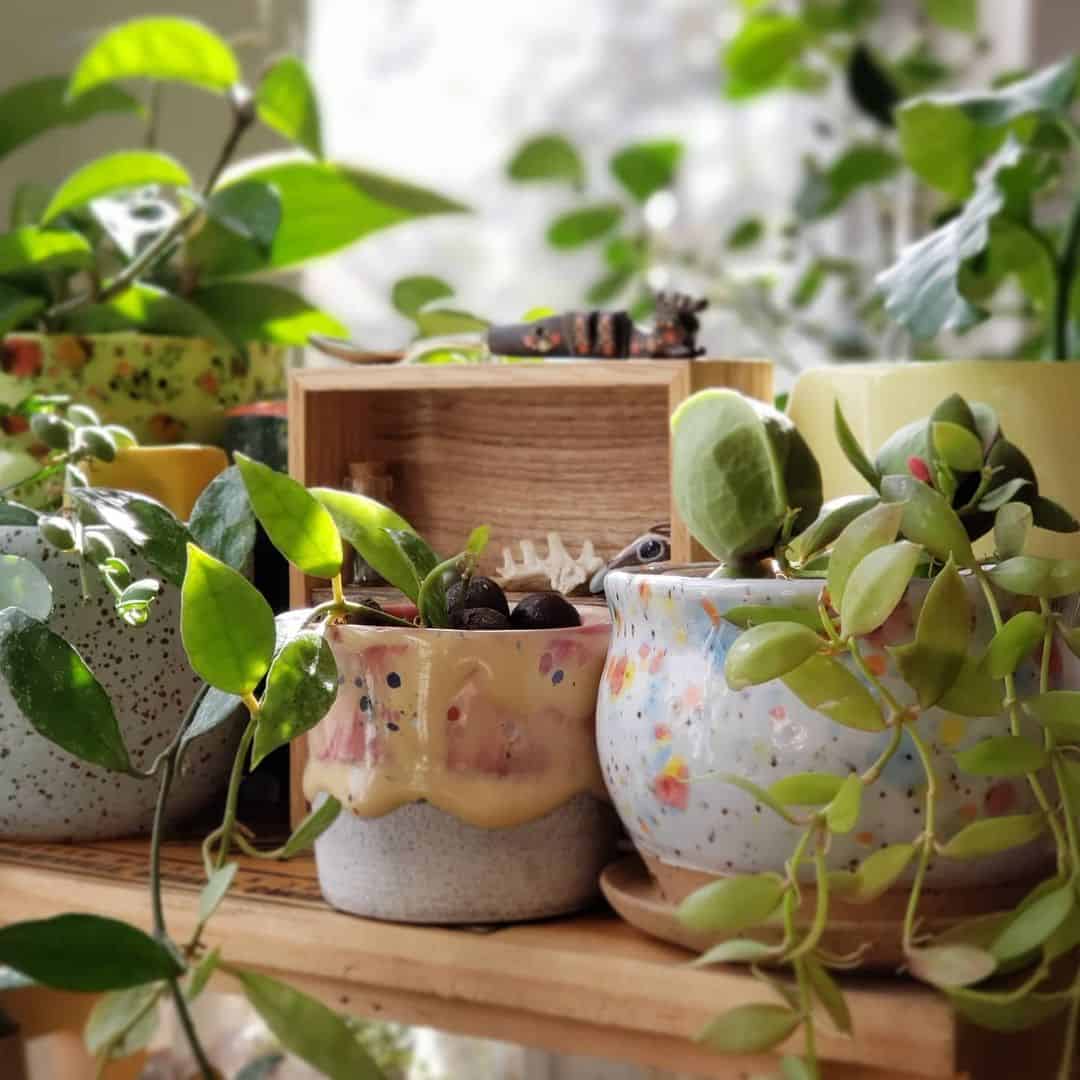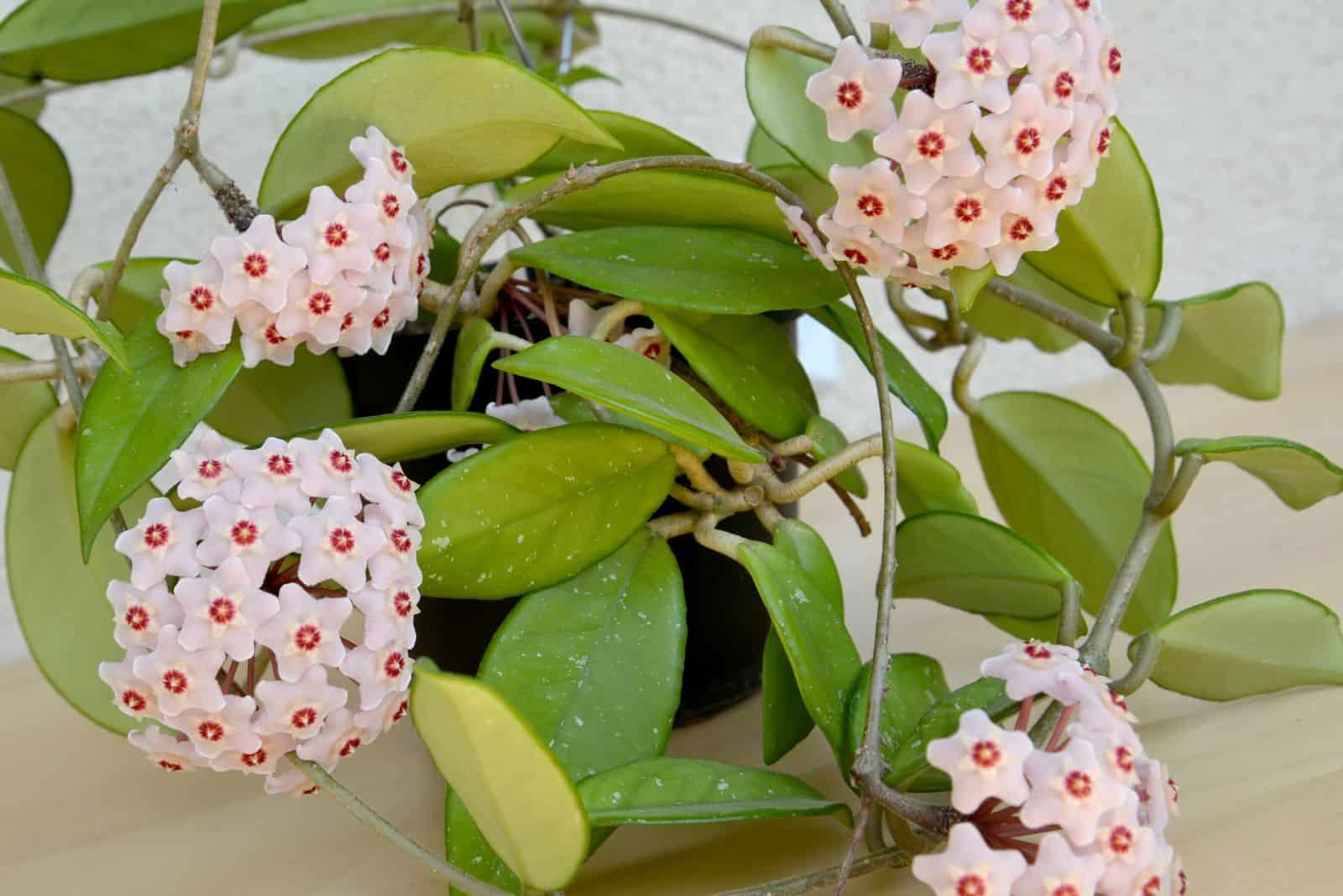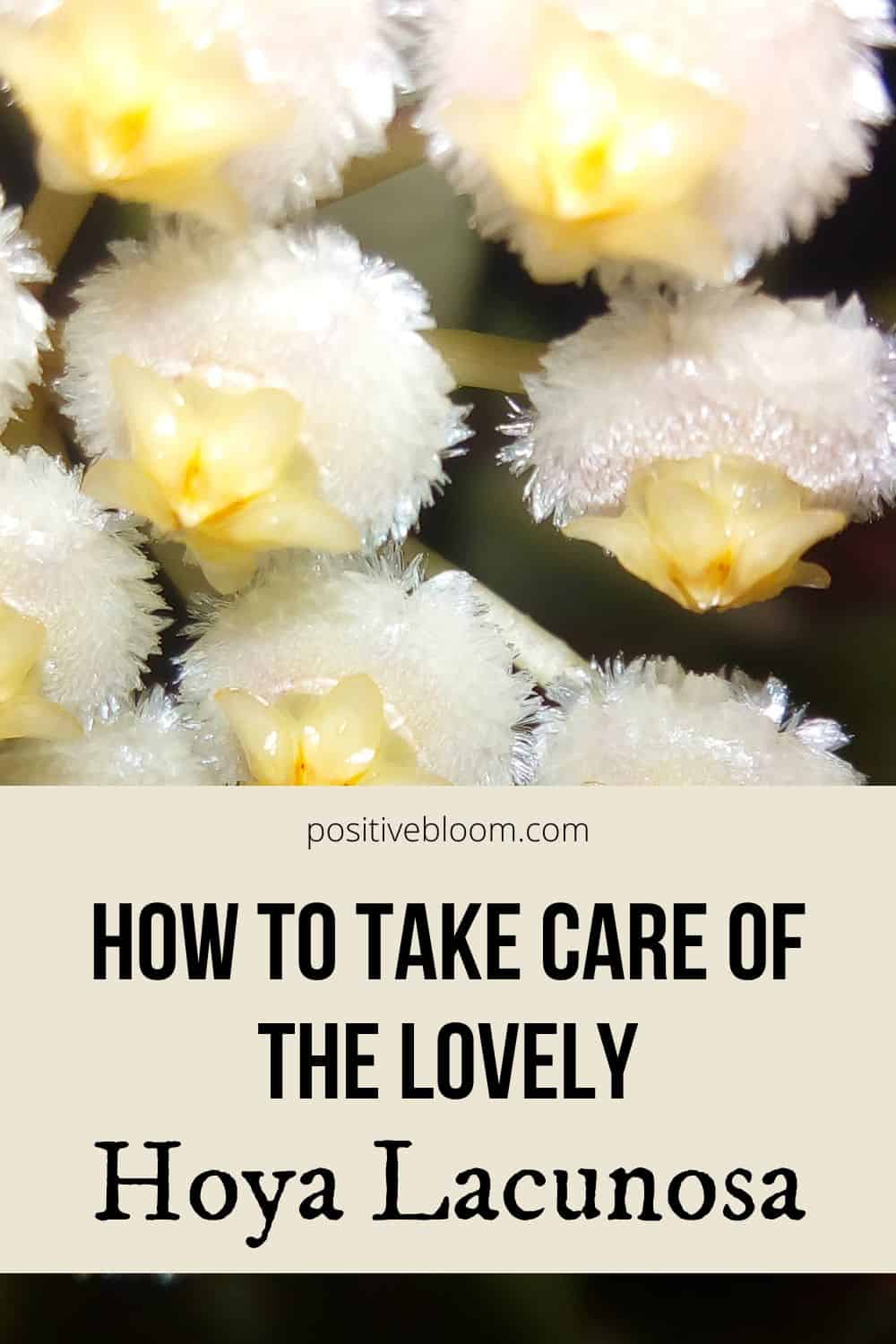Due to their wonderful fragrance and lovely flowers, Hoya plants are becoming more and more popular nowadays. Not only are they going to make your room look nicer, but they will fill it with a beautiful aroma too, making your whole house smell wonderful!
The Hoya Lacunosa cultivar produces small white flowers and oval-shaped green leaves. The leaves have a prominent lacunose surface (sunken veins), hence the name.
These houseplants are usually grown in hanging baskets because they produce long green vines covered with leaves and flowers — they look truly breathtaking!
So, if you want to know more about the Hoya Lacunosa and how to take care of it, keep reading!
Hoya Lacunosa Common Features
The Hoya Lacunosa is a flowering plant that´s native to Indonesia. It belongs to the Apocynaceae family. Hoya species, such as Hoya retusa, and Hoya gracilis, are often referred to as Wax plants because they produce glossy small leaves.
It can be grown perfectly fine indoors, but it can thrive outdoors as well – especially in USDA hardiness zones 10a to 11b. They will bloom all year round if the growing conditions are optimal; otherwise they bloom in spring and summer.
Now, let’s look at some of the common features.
Plant Size
The Hoya Lacunosa is one of the shorter varieties of the Hoya family. Its vines can be up to 5 feet long, though you can prune them to maintain a specific length.
It is a relatively fast grower, so you might have to sharpen your pruning shears more often than usual!
Flowers
The flowers have white and creamy colors and a fuzzy texture. These tiny flowers grow in clusters or umbels — there are about 15 to 20 flowers per cluster. Their average lifespan is around 5 days; however, the plant keeps producing them during warmer seasons all the time!
These flowers are cinnamon-scented, which is why they bring such a wonderful aroma indoors.
If you are growing a Hoya outdoors, the flowers can be used to attract bees and other pollinators.
Leaves
Although other Hoya varieties, such as the Sweetheart Hoya, have characteristic heart-shaped leaves, the Hoya Lacunosa actually produces small leaves that are oval-shaped. The leaves have a deep green color, though there is a variegated cultivar that has white speckles all over the leaves — we sometimes call them frosty leaves!
The leaves grow from thin, trailing vines, and they usually reach up to 3 inches when mature. These leaves grow alternately and vigorously, which is why these plants look absolutely gorgeous in hanging baskets and on a trellis.
Hoya Lacunosa Plant Care Guide
What’s also great is that taking care of this Indonesian beauty is relatively easy!
All you have to do is provide higher humidity levels, meet the plant’s watering needs, make sure that the lighting conditions are good, and provide it with the best potting mix with lots of nutrients.
Let’s look into more detail.
1. Soil Requirements
Well-draining soil is a crucial growing condition for Hoya plants because they tend to get overwatered easily. Trust me, I barely saved my Hoya Fungii from root rot!
There are a few potting mixes that will meet your Wax plant’s soil needs.
Use one part each of potting soil (found at all plant stores), perlite (which aids drainage), and orchid bark (alternatively, you can use coco coir to improve air circulation).
In addition to perlite, the following three compounds are useful for enhancing drainage:
• Sand
• Pumice
• Vermiculite
• Peat moss
2. Water Requirements
Lacunosa is a semi-succulent plant. This means that the plant’s leaves don’t totally rely on the roots to meet their water and nutrient needs because, in comparison to other houseplants, they have a small root system.
Second, the leaves can store water because they are fleshy. This characteristic allows Hoya plants to endure prolonged periods without water (not too long, though).
Because the roots of the wax plant are tiny, they don’t require much water. Additionally, adding extra water will just harm the plant because the leaves already have water stored.
However, these plants like to have moist soil. Therefore, you will have to check the soil before watering. If the soil is dried out, then it is time to water the plant again.
Water thoroughly until the water drains out through the drainage holes in the bottom of the pot — drainage holes are crucial for preventing overwatering.
You don’t have to water as much during the winter season because the soil takes longer to dry out.
3. Temperature Requirements
The ideal temperature range for your Hoya plant is between 59 and 86 degrees Fahrenheit.
The Lacunosa plant may get leggy if the temperature falls below 50 degrees Fahrenheit or rises beyond 86 degrees. Avoid placing your Hoya plants close to heat sources (such as fireplaces or radiators) as they won’t thrive there. The growth of new leaves will be impeded by high temperatures.
4. Fertilizer Requirements
Hoya plants need to be fertilized once a month during the growing season. The fertilizer needs to be diluted to half-strength.
Never apply fertilizer to dry soil because the chemical concentration will be higher and cause the soil to burn. Wait till you have watered the plant. The Wax plant blooms and produces flowers without the need for fertilizer.
Rather than fertilizing the plant after it begins to bloom, use a bloom booster instead of one that is high in nitrogen (it promotes leaf growth). You should select a phosphorus-rich fertilizer, such as 4-6-3. (the 6 is its phosphorus content).
Your Lacunosa will flower more as a result of the bloom enhancer.
5. Light Requirements
These plants thrive in bright indirect light. If you can locate a spot for your wax plant with strong indirect light near an east or south-facing window, it will adore you! The leaves of the Hoya can burn and turn yellow when exposed to direct sunlight.
The leaves will need to be removed if they get sunburned because they won’t be able to recover. If you’re worried that your prized Hoya plant will get direct sunshine, cover the window with a sheer curtain to provide some partial shade. This will resemble the tropical environment in which the plant grows.
Put your plant under a tree if you choose to grow it outside.
6. Humidity Requirements
Tropical plants are used to high humidity, and Lacunosa plants are no different. As you look for the ideal location for your plant, ensure that the humidity level is at least 50%.
Anywhere between 40% and 60% humidity is good for growing. I’m telling you this because, in general, our homes don’t have high humidity, therefore, even at a humidity level of 40% (not lower), Hoya will continue to thrive.
There are a few methods you can use to raise humidity. I advise you to get a hygrometer, which will display the humidity level in your home as a percentage.
If it consistently falls below 40%, that is low humidity for your Hoya plant. Therefore, you will have to find some ways to improve humidity. You can either invest in a humidifier, try misting your plant, or create a pebble tray.
You can also simply put your plant in a room with high humidity, such as the kitchen or bathroom.
7. Repotting
The Hoya plant enjoys being rootbound. Its small roots take roughly two to three years to begin emerging from drainage holes.
That is actually the sign that it needs repotting. Depending on the conditions you give your plant, it may take longer or shorter for the roots to begin emerging from the drainage holes.
When repotting, a larger pot is not necessary because the roots will have too much soil surrounding them, increasing the risk of waterlogging. Consequently, root rot may affect your plant.
Make sure the plant has enough room to grow if you detect any changes such as stunted growth. This can be accomplished by repotting in 10-inch pots (they usually come in 4-inch pots).
8. Propagation
There are two ways to propagate the Hoya Lacunosa plant: through stem cuttings or from seedlings.
If you choose to grow plants from stem cuttings, you can put the cuttings in sphagnum moss, soil, or water.
Propagation By Stem Cuttings
I’ll start by demonstrating how to take stem cuttings.
• Choose a stem that is healthy (4-6 inches long), and trim it just below the lower node. There should be at least two or three leaves on the stem.
• To see the node, remove the lower leaves. This is a crucial stage because the roots will spread and the leaves will retain water, which might ruin the entire process.
Let’s look at how to plant a stem cutting in the soil now that you have one.
1. Take a fresh pot and fill the bottom third with the proper potting soil.
2. Dig a hole with your fingers in the ground, then bury the stem cutting approximately two inches deep.
3. Make sure the leaves are covered with soil by pressing it down around the cutting.
4. Moisten the soil and put the pot in bright indirect light.
5. Keep misting the soil frequently.
Propagation From Seedlings
Get a seedling tray and some Lacunosa seeds first. Make sure you buy your seeds from a reliable source because sellers can try to trick you by offering seeds from other species.
Let’s examine the process of growing a Wax plant from seedlings!
1. Add the proper potting mix to the seedling tray.
2. Carefully press each seedling into the soil as you place it into the potting mix. Make sure there is at least 1 inch of space between each seedling.
3. To boost humidity and temperature, wrap the tray with plastic wrap.
4. Position the tray in a cozy area with plenty of indirect light (a bathroom or kitchen will do well).
9. Common Issues
Even though Hoya plants are relatively hardy, they are still susceptible to some pests and diseases. For instance, mealybugs, scales, or spider mites may pay your plant a visit. These are easily removed by neem oil or pesticides.
Botrytis blight and sooty mold are the two fungi that affect Hoya plants most frequently.
Your plant may have botrytis blight if you see gray spots on the leaves and stems. If left untreated, it can result in sizable spots on the leaves that gradually soften and eventually fall off.
You can also use neem oil as a fungicide in this scenario.
FAQs
1. What are some common Hoya species?
Some of the common Hoya species include Hoya Carnosa, Hoya Pubicalyx, Hoya Krohniana (the one native to the Philippines), Hoya Kerrii, Hoya Macrophylla Variegata, and, of course, Hoya Lacunosa.
2. What does the Hoya Lacunosa smell like?
The Hoya Lacunosa produces white flowers that are cinnamon-scented, which means that they are going to fill your home with a lovely cinnamon aroma.
3. Is the Hoya Lacunosa a fast grower?
The Lacunosa grows relatively faster than other Hoya species. However, it is still a slow-growing plant, so you won’t have to worry about constant repotting!
To Sum Up
You should definitely add the Hoya Lacunosa to your “must-have” list!
Not only is this plant going to produce lovely flowers that will decorate your space and also make it smell nicer, but there is also no big fuss regarding plant care!
Keep them in bright indirect light, make sure that the temperature and humidity are relatively high, and water them every now and then. It only takes a little to make this plant happy, and it will surely be grateful by producing dreamy white flowers.
I hope this article was helpful.
Until next time!
Like this post? Share or pin it for later!

